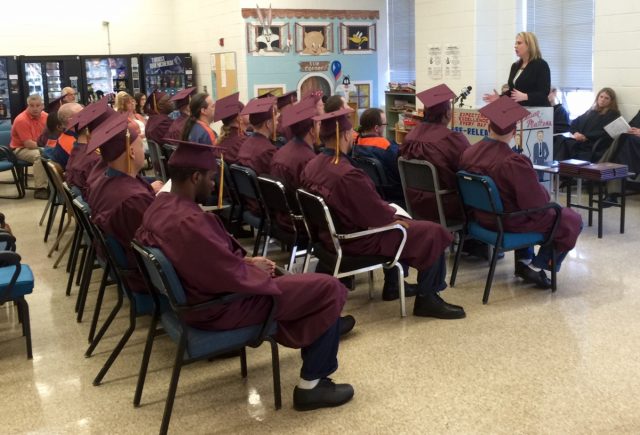
Jackson College graduation ceremony at Parnall Correctional Facility. Jackson was one of many colleges in Michigan to offer Pell grants to prisoners under a federal pilot program. MDOC photo

VOD staff writer Ricardo Ferrell
By Ricardo Ferrell
VOD Editorial
An out-of-control corrections budget continues to contribute to the practice of keeping those within the system locked-up longer than necessary. Ask unpopular questions such as: What are some of the driving factors associated with over-incarceration? Why does the State of Michigan think it’s making communities safer by arbitrarily denying parole to those who no longer pose any significant danger to public safety? How can the MDOC, specifically the Michigan Parole Board, reform their draconian practices?
Perhaps by returning to a prison system which promotes rehabilitation inclusive of educational opportunities for all prisoners – whether that looks like GED programming for lifers and those serving long indeterminate sentences, skilled trades, higher education thru Pell Grants, or allowing more colleges & universities like Calvin College, Grand Rapids Community College, Davenport College, Montcalm Community College, Olivet College, Kellogg College, Wayne Community College, Jackson Community College, Albion College, Delta College, Northern Michigan University, Lake Superior State University, Central Michigan University, Michigan State University, Wayne State University, University of Michigan, Eastern Michigan University, Grand Valley State University, and Ohio University to be expanded to more facilities which would provide opportunities for individuals to receive an education.
Studies have shown significant reductions in recidivism for those released who were afforded some educational opportunities during their incarceration. With acquiring some education the offender is placed in the more likely than not category to succeed after his or her release. Thus recidivism is reduced to right around 50 percent.
Therefore, it would seem that the Michigan Department of Corrections would be out front in the lead to better prepare those confined in correctional facilities to experience and benefit from what’s being currently offered by many of the College’s & Universities mentioned above. That is of course, if the MDOC wishes to get serious about reducing its prison population, its enormous budget, and contribute to making communities safer.
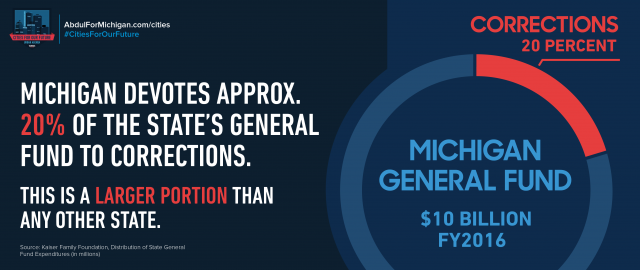
And, the question should be asked. What’s more important, saving money or saving people? Well, if you save people (offenders) then theoretically speaking you will save money, especially, with providing them with the tools they need such as: education, counseling, and a skilled trade to meet today’s demand in the workforce. Michigan not only can slash its enormously high corrections budget but also contribute to reducing recidivistic trends by focusing more on helping offenders succeed rather than inadvertently perpetuating their failure.
By leaving in place failed practices which have kept the corrections department behind other states that have actually taken a serious approach and initiative to reform their prison systems, Michigan will undoubtedly remain in virtually the same position and predicament we’ve seen for the last 40 years or more. Michigan and its Corrections Department have a perfect opportunity right now to become like its five lakes – Great!!!
Tax breaks and other incentives are given to companies and businesses that provide employment opportunities for returning citizens seeking to become a part of the workforce. Basic conditions of their parole require they obtain and maintain gainful employment. Considering the fact some 95 percet of those incarcerated will eventually be released; it seems both logically sound and economically feasible for the Michigan Department of Corrections to really put more of an emphasis on preparing those under its care with what’s essential for them to succeed and not become an alarming statistic due to not being given such a chance.
Common sense approaches demand a rational minded individual to do the right and practical thing like what’s being written here. Michigan taxpayers cannot be expected to keep fueling a broken MDOC engine by helping to pay its outrageously high $2.2 billion wasteful budget year in and year out. More emphasis on investment and providing educational opportunities for prisoners instead of throwing and pouring billions of dollars into a broken prison system would be a smart start.
Incarcerated individuals have gone from convicted felons paying their debts to society to Prison Industrial Complex commodities, costing taxpayers over $80 billion annually here in the United States. No other country on the globe incarcerates more of its citizens than that of the U.S. The U.S. has five percent of the world’s population and 25 percent of its incarcerated population.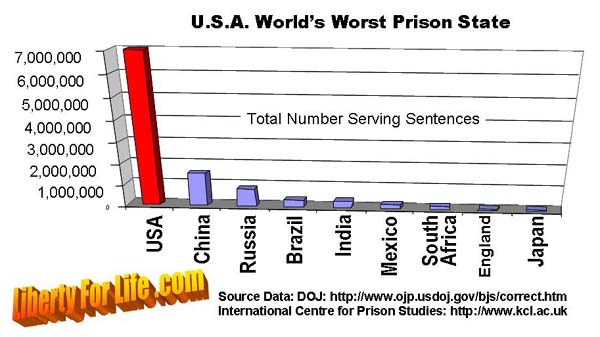
MICHIGAN COLLEGES LEADERS IN OFFERING PELL GRANTS TO PRISONERS
By Lindsay VanHulle (excerpt)
Crain’s Detroit Business
August 6, 2016
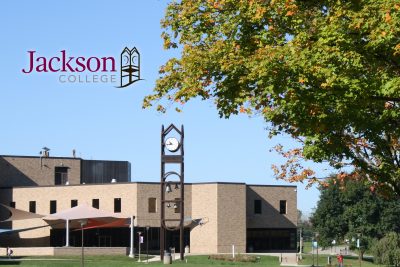
Jackson College, Michigan
LANSING — Several years ago, as administrators at Jackson College prepared to offer courses to inmates at a state prison, they weren’t optimistic about success.
The community college in Jackson County had educated inmates for decades, but stopped in the mid-1990s when a federal law change prohibited incarcerated students from receiving Pell Grants. This time around, administrators thought the first class of 18 prisoners paying their own way would be the most academically disadvantaged students they’d ever taught. They planned remedial courses and leveled their expectations.
That inaugural class in 2012 eventually grew to about 400 prisoners today, partly due to additional grants. Those students would not only raise the bar, but shatter it, said Todd Butler, the college’s dean of arts and sciences. Inmates make up about 3 percent of Jackson College’s part-time student population, Butler said, but 46 percent of the part-time dean’s list. Their success rate on their first attempt at completing a developmental math class is near 100 percent, compared to 54 percent of on-campus students.
Butler said instructors attribute the difference in part to a noticeably strong work ethic among incarcerated students.
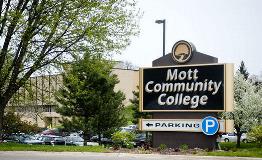
Mott Community College
“It’s that moment when we begin to pull (back) that curtain of our own imagination,” Butler said, “and say, ‘I didn’t realize that this level of potential existed.’?”
Jackson College has been a leader among higher education institutions in Michigan in teaching prisoners while they’re behind bars. Offering college classes in prison is one piece of a broader approach within state corrections departments nationally — and particularly in Michigan — to try to increase inmates’ employment opportunities post-release and lessen the chances they’ll get locked up again.
The college is one of three in Michigan, and more than 60 across the country, to be chosen to participate in a U.S. Department of Education pilot program that will waive restrictions on federal Pell Grants for prisoners in order to find out whether more prisoners will pursue education if they have financial assistance. Jackson College was slotted for 1,305 Pell Grants, more than any other selected college or university in the nation, according to the department.

Delta College
Mott Community College in Flint and Delta College near Bay City also were chosen to participate.
Michigan is second only to Texas in the total number of Pell Grants received, at 1,475. The three schools will teach students at a number of state prisons, including the Detroit Re-entry Center on Ryan Road and Macomb Correctional Facility in New Haven, according to the federal government.
VOD Editor’s Note: Why don’t Michigan’s top universities like Wayne State, UofDMercy, Grand Valley State, and others located in cities with high incarceration rates, request these grants for prisoners? Instead, county prosecutors are focused on keeping 247 of the state’s juvenile lifers behind bars until they die, in violation of two U.S. Supreme Court rulings, Miller v. Alabama, and Montgomery v. Louisiana.




